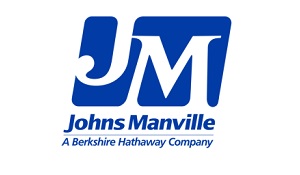One of the most fundamental decisions to make with a commercial roofing system is whether to use a ballasted system, a mechanically fastened system, or an adhered system. Each choice has its own pros and cons, and each is well suited to serve different situations, but adhered systems are often chosen for their light weight and proven performance. If that’s the case with a roof you are working on, then understanding how it is properly adhered is critically important.
What goes into selecting the right adhesive for a project? Essentially it boils down to making sure the bond between the roofing membrane and the substrate is complete, strong, and reliable enough to last for the lifetime of the roof. Here are some things to keep in mind:
Substrates: The roof deck and substrate material are determined by the architect or engineer for the project based on a variety of building design criteria or the existing conditions of a building that is already built. So, the first thing to check is the compatibility of any adhesive product with the roofing substrate. Is the substrate the structural deck (i.e., concrete, metal, or wood) or is the roofing being adhered to rigid insulation – if so, what type? How is the insulation secured in place – is it mechanically fastened or is an appropriate urethane adhesive used to secure the boards to the deck and/or each other?
Pro Tip: Consider the use of a cover board as the membrane substrate. They are engineered to meet the needs of different roof and project needs but also to be well suited to receive adhesives. Using a manufactured cover board provides consistency and predictability for applying adhesives and helps assure the long-term performance of the roof system. They can also be offset from the roofing base insulation products to aid in energy efficiency. The coverboards are used to stagger the joints of polyiso insulation, so thermal bridging is reduced which means less heat loss out of the roofing system.
Roofing Membranes: The choice of a single ply roofing membrane or a bituminous membrane directly determines the choice of adhesive to be used. Consider the following:
For single ply membranes (i.e., TPO, PVC, EPDM) spray-on or roll-on solvent-based adhesives are most common. Local and State regulations have also mandated the use of Low VOC and water-based adhesives which have gained popularity over the years. It is important to check with your local regulatory bodies when selecting the proper adhesive. Keep in mind that each adhesive is specifically formulated for the type of membrane being used. For example, while some adhesives may be used on both TPO and EPDM, note that they are not necessarily compatible with PVC which requires a different formulation. Consultation with the manufacturer is critical in this case in order to make the proper adhesive selection.
Pro Tip: Use the applicator or spray equipment that the manufacturer of the adhesive offers. Such accessories are specifically designed to work best with their products and can save time and money over the course of the job.
For bituminous membranes (i.e., SBS, ABB, BUR) the choice will be hot or cold application of the adhesive/ mastic products to be used. In this case, the adhesive product can be an integral part of the waterproofing nature of the roofing system so the membrane and the adhesive need to be working properly together. Many, but not all adhesive products from a manufacturer may be suitable for all bituminous roofing types. Therefore, check the technical information for each product to be sure it in fact is recommended for the type of roofing system being proposed.
Pro tip: For SBS roofing systems, consider an adhesive that cures with ambient moisture to create an elastomeric solid that remains flexible to absorb dynamic stresses.
For hybrid systems (i.e., a bituminous membrane with a single ply cap sheet) the choices may be more limited for the best compatibility. Not all single ply membrane products can be used in conjunction with a bituminous one and some cannot tolerate a bitumen-based adhesive. However, some can work just fine as a cap sheet when cold-applied adhesive is used.
Pro tip: Use products from the same manufacturer for all parts of a hybrid system to be sure of the proper compatibility.
Flashings: There is always more to any roofing system than just the open field area of the roofing. Edges, penetrations, adjoining walls, and other interruptions all need to be properly and fully addressed. In response, there are a variety of products formulated to address a range of possible conditions. However, they should be selected and used for the specific location they are designed for. A pourable sealer is appropriate for open penetration pockets. Depending on the membrane type, bituminous utility cement or thermoplastic sealants are best for flashings and penetrations. Some are specifically created to work on vertical walls so flashing and connections can be made with the appropriate adhesion strength.
Pro tip: For a healthier and more environmentally friendly installation, consider the use of low-VOC sealants and adhesives. While some locations, such as California may require their use, it is proving to be a good solution in all locations.
The success of a commercial roofing system depends on both the workmanship of the installers and the quality of the products. Qualified roofing contractors assure the workmanship and Johns Manville assures the products. Not only is their range of roofing products extensive and complete, but they are also coordinated, researched, and proven from years of in-field use. Backing up the whole process is a technical team who can address questions, research new situations, respond to custom situations, and support designers, installers, and building owners.
For more information about the family of adhesive products appropriate to a current or upcoming roofing project, visit the Johns Manville website or contact your Johns Manville representative who can provide personalized services.



